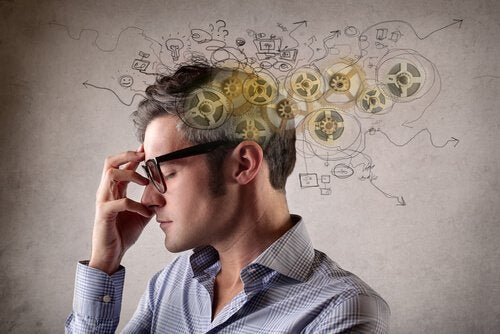Spatial intelligence, as an exclusive domain, encompasses a skill set, this skill combination comes down to: having the ability to accurately perceive the visual world, make changes and modifications from initial perceptions, and recreate aspects of your own visual experience.
Space intelligence therefore takes its name from the fact that it intervenes in solving spatial problems, whether real or imaginary; this type of intelligence is related to a person’s ability to treat aspects such as color, line, shape, figure, space, and nature. relationship that exists between them. People with a marked spatial tendency tend to think about images and photographs, view them or draw them.
- Howard Garner.
- A psychologist.
- Researcher and professor at Harvard University.
- Defines spatial intelligence as the ability to think in three dimensions.
- Allowing us to perceive external and internal images.
- Recreate them.
- Transform or modify them.
- Decode graphic information.
“In practice, it’s just a problem that intelligence can solve. -Hermann Keyserling-
Knowing how to locate yourself in space is critical to survival. The first thing we always do is locate our spatial position, know where we are compared to other places so that, for example, we can go from one place to another, so, to move, we draw an imaginary vector from our position to the target.
Our level of spatial intelligence will determine our success in tasks such as driving (especially in little-known/unknown places) and parking a car, building a model, guiding, instructing another person who sees things from another angle, or using tools.
Other less frequent activities in which spatial intelligence is highly involved are, for example, those in which a shape must be carved in a material or in the plane of a structure, for which architects and sculptors usually show a good level of this kind of intelligence. Even if only for constant training and specialized training.
Human intelligence is much more than IQ. The main problem with intelligence is that we do not have a single definition of intelligence and, above all, that we do not have instruments that combine a majority consensus on its validity and predictability How can we attribute a coefficient to the humor, irony and worse, the diverse and plastic capacity of the human being to respond creatively to the challenges that society and nature impose?
“True intelligence acts in silence. It is in silence that we find creativity and problem solving. Eckhart Tolle-
Spatial intelligence responds to training, as does intelligence in general. It has been shown that the practice of exercises similar to those used to assess the level of spatial intelligence is practical to improve in this dimension.
These exercises consist, for example, of spatial rotation tasks, the comparison of two objects placed in different positions that can be equal or similar, spatial attention to various stimuli, etc. We are all born with some predisposition to develop this type of intelligence, and it is in your hands to develop it from this basic level.
However, the fact that spatial intelligence is highly conditioned by genetic components does not mean that our scope for evolution in this direction is negligible.
In the day-to-day we can integrate certain tasks that can be very beneficial when it comes to enhancing spatial capabilities, for example, vehicle driving is often an important element in the development of spatial intelligence. pay attention to many elements in the middle, as well as the movements and the ratio of distances and sizes between objects (if we don’t want to hit, of course).
On the other hand, drawing and spatial activities, such as planning how best to distribute a certain number of objects or people, also requires the use of spatial intelligence and, in general, games whose execution is directly related to spatial capabilities. are well-known magic cubes and some video games, such as the famous Tetris.
“Intelligence is nothing more than knowing how to talk about things and things with people, thus gaining infinite wisdom. -Yamamoto Tsunetomo-
bibliography
Burgos, B. M. V. y Guatame, A. X. L. (2011) How does the mental and conceptual mapping strategy stimulate the development of spatial intelligence among university students?Tabula Rasa, (15), 221-254.
Dziekonski, M. (2012). Space Intelligence: A Look at Howard Gardner, Oficio Art Magazine, 2 (2).
Gardner, H. (1998). Multiple intelligences. Barcelona: Paidas
Lapalma, F. (2001). What do we call intelligence?The theory of intelligent principles and education. Ibero-American Journal of Education.
Ramos, J. C. et Adez, G. P. (1985). Spatial intelligence and skills: psychometric study and information processing. University, Faculty of Philosophy and Educational Sciences.
Suarez, J. , Maiz, F. y Meza, M. (2010). Multiple intelligences: an educational innovation to enhance the learning process. Research and Postgraduate, 25 (1).
Van Schaik Leon (2008). Space intelligence: new futures for John Wiley architecture

